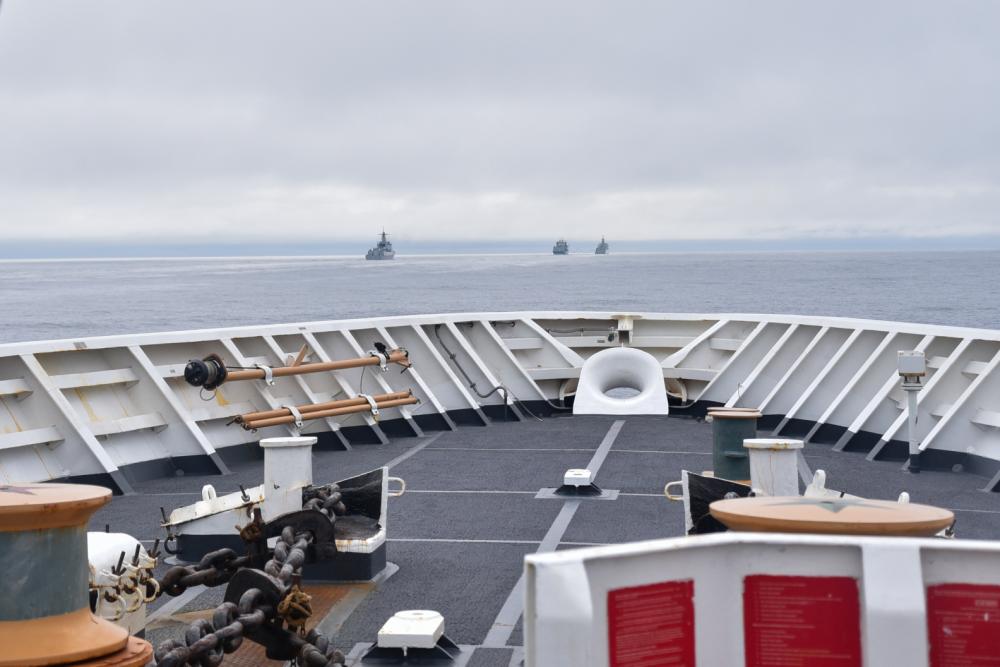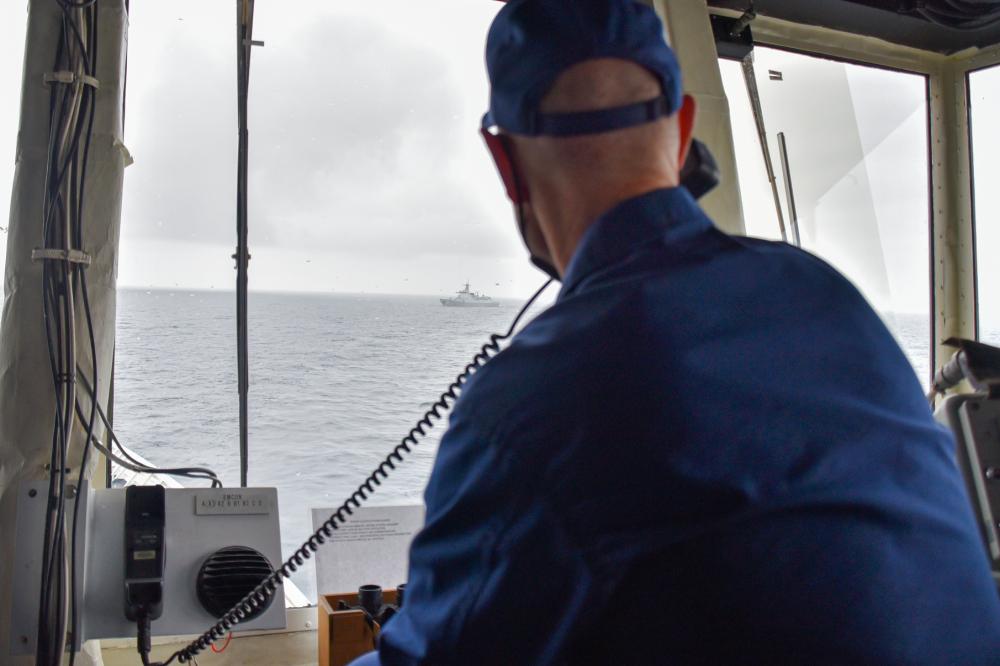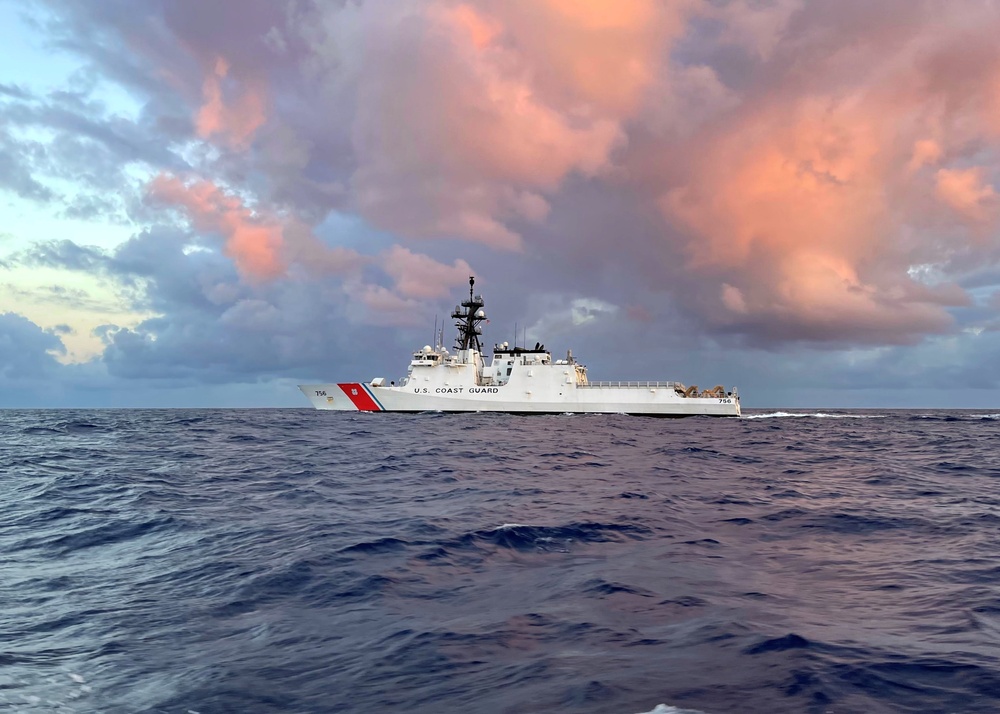A US Coast Guard patrol unexpectedly encountered Chinese warships near Alaska’s Aleutian Islands
The four Chinese warships came within 46 miles of Alaska's coast.

During a routine patrol near Alaska’s Aleutian Islands on Aug. 30, U.S. Coast Guard vessels spotted four Chinese warships conducting military and surveillance operations.
The ships from the People’s Liberation Army Navy ventured as close as 46 miles to the Aleutian Islands, the Coast Guard said on Monday.
The patrol consisted of the U.S. Coast Guard Cutters Bertholf and Kimball, both Legend-class maritime security cutters.
The Chinese ships were in the U.S. exclusive economic zone, which stretches about 200 miles from Alaska’s coast, from Aug. 29 to Sept. 1. They did not enter U.S. territorial waters, which extend 12 miles from the shore.
Chinese ships were last spotted in the region in 2015, when they passed through U.S. territorial waters near the Aleutians.
The Chinese expedition in August included a guided missile cruiser, a guided missile destroyer, a general intelligence vessel and an auxiliary vessel.
The Bertholf established radio contact with the Chinese ships during the unplanned encounter, and the ships observed international laws and norms, the Coast Guard said.
“Security in the Bering Sea and the Arctic is homeland security,” Vice Adm. Michael McAllister, commander Coast Guard Pacific Area, said in a statement. “The U.S. Coast Guard is continuously present in this important region to uphold American interests and protect U.S. economic prosperity.”
Troy Bouffard, an instructor at University of Alaska Fairbanks, told ArcticToday the encounter was “not altogether a surprise,” but it’s an “important” indication of China’s view of the region.
“We’re probably starting to frustrate them a little bit, maybe, with the South China Sea issue,” Bouffard said. The Aleutian exercise may be a demonstration of China’s capabilities in light of those U.S. exercises in the South China Sea.
“I don’t think they’re trying to provoke a reaction, necessarily, but I think they were sending a clear strategic message,” Bouffard said. “They can also enter our waters under legal norms.”
Demonstrations like these may become more common as China continues developing its blue-water naval capabilities, Bouffard said.
Although the Arctic is usually characterized as low risk for conflict, there is the chance of international disputes elsewhere spilling over into the North, recent Arctic strategies from U.S. military branches have said.
While ships pass regularly through other countries’ exclusive economic zones, they often notify those countries of exercises ahead of time.
In August 2020, Russian warships and aircraft ordered Alaska fishing trawlers out of the way during exercises in the U.S. EEZ. Countries have natural resources rights, including fishing, in exclusive economic zones, but other ships may pass through them.
The U.S. government had advance notice of the Russian exercise, but word didn’t trickle down to fisheries operators.
“The Russian Navy had every right to be there and the fisheries activities had every right to be there, but they didn’t quite mix very well at the moment,” Bouffard said. “It became an opportunity for Russia to exploit, and they did.”
The incident spoke to the need for better communication in a region that is opening up to more traffic. And “it’s also indicative of the need for more resources for the Coast Guard, so they can have more presence, because they’re stretched very thin,” Bouffard said, noting the situation last year may have gone better if the U.S. service were present during the exercises to prevent and deescalate run-ins like these.
The U.S. has a long history cooperating with Russia in the North, Bouffard said. Unexpected encounters with other countries, however, may expose gaps in U.S. relations.
“We know that [Russia] will not act overly aggressive, go into violence or conflict, necessarily,” Bouffard said. But “we don’t know this about China. We don’t have that relationship or that experience. So there’s so much to learn from this.”
The encounter itself, and the possibilities for escalation or miscommunication when the two services spied each other, is not the only story, Elizabeth Buchanan, a lecturer in strategic studies at Deakin University in Australia, told ArcticToday in an email.
The fact that China is focusing its attention on the Aleutians is extremely important, she said.
The Bering Strait is “the world’s most overlooked maritime choke point,” she said, calling it “essentially is the linchpin for North Atlantic-Pacific bridging, including a key maritime artery for Russia and the U.S.”
China may be trying to anticipate potential moves by the U.S. or perhaps Russia to limit or close off Chinese access to the North.
“While there was no breach of U.S. territorial waters (nor do I expect that was ever planned), this is about prodding and testing limits short of overt challenge or crossing boundaries,” she said.
She doesn’t expect many unannounced freedom-of-navigation operations in the Arctic from China, which wants to protect its burgeoning status as an Arctic player.
“China’s aim in the Arctic sense is to build itself into the region as an indispensable element (economically, technically, telecommunications, satellite, infrastructure etc),” Buchanan said. “Then the power play comes — states are coerced to trade off national interests to cater to Beijing. We see this is Southeast Asia, South America, and Africa already.”
Yet more frequent encounters may be seen in the Bering Strait, North Pacific and even Central Arctic Ocean regions as they see more traffic, Buchanan said.
“This is nothing against international law, but it does underscore the need for avenues of dialogue and de-escalation,” she said. “This is something that sets today apart from the Cold War contest of power — clear rules existed and the phone line to deescalate together was connected. China and the U.S. have neither to work with.”


